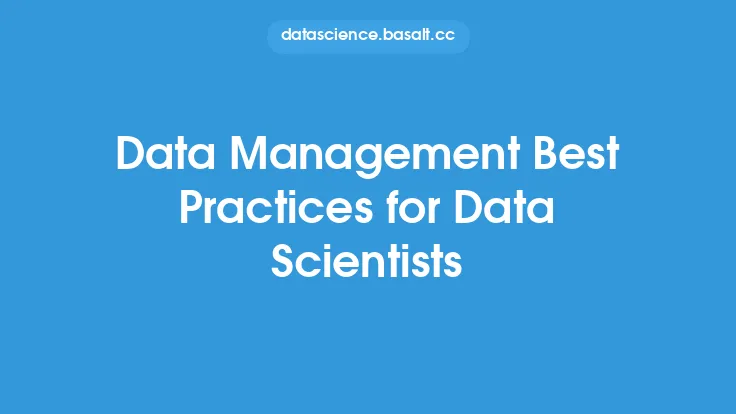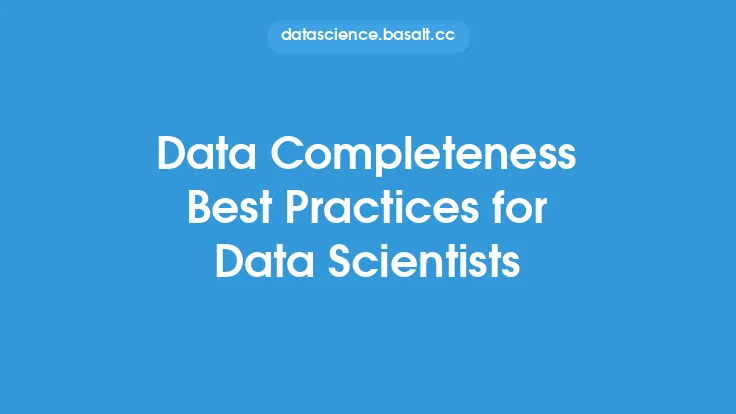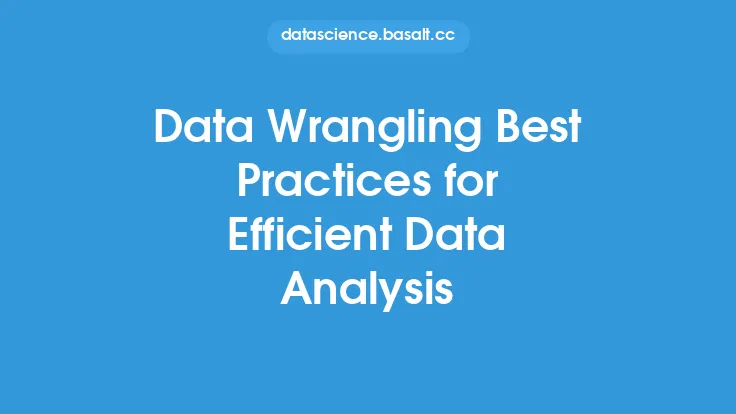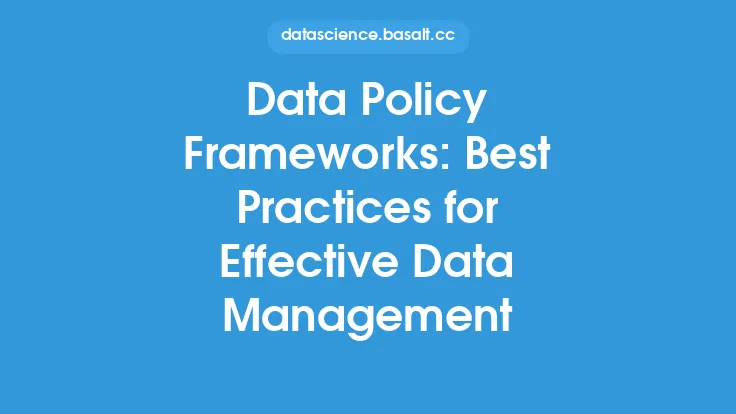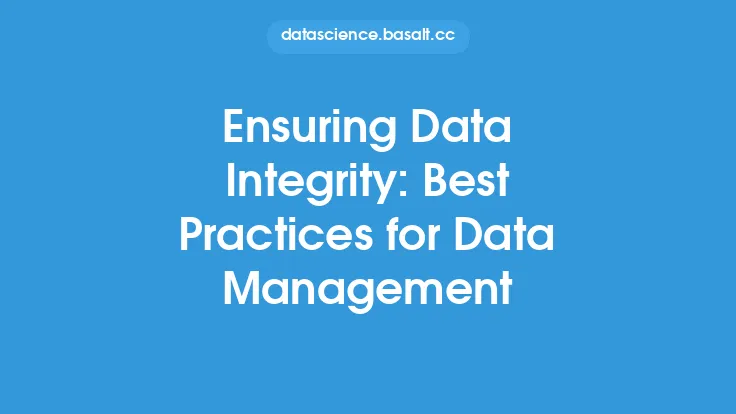Data pipeline management is a critical aspect of data engineering, as it enables organizations to efficiently process and analyze large volumes of data from various sources. A well-managed data pipeline is essential for ensuring that data is accurate, complete, and available to stakeholders in a timely manner. In this article, we will discuss the best practices for managing data pipelines, including the key components, design considerations, and operational strategies.
Introduction to Data Pipeline Management
Data pipeline management involves the planning, design, implementation, and maintenance of data pipelines. A data pipeline is a series of processes that extract data from multiple sources, transform it into a standardized format, and load it into a target system for analysis and reporting. Effective data pipeline management requires a deep understanding of the data sources, processing requirements, and target systems, as well as the ability to design and implement scalable and reliable pipelines.
Key Components of a Data Pipeline
A data pipeline typically consists of several key components, including data sources, data processing, data storage, and data consumption. Data sources can include databases, files, APIs, and other systems that generate or store data. Data processing involves transforming, aggregating, and filtering the data to prepare it for analysis. Data storage refers to the systems and technologies used to store the processed data, such as data warehouses, data lakes, or NoSQL databases. Finally, data consumption involves the tools and applications used to analyze and report on the data, such as business intelligence software, data visualization tools, or machine learning algorithms.
Design Considerations for Data Pipelines
When designing a data pipeline, there are several key considerations to keep in mind. First, the pipeline should be scalable and able to handle large volumes of data. This may involve using distributed processing frameworks, such as Apache Spark or Hadoop, to process data in parallel. Second, the pipeline should be fault-tolerant and able to recover from failures, such as network outages or system crashes. This may involve using techniques such as data replication, checkpointing, or retry mechanisms. Third, the pipeline should be secure and ensure the confidentiality, integrity, and availability of the data. This may involve using encryption, access controls, and authentication mechanisms.
Operational Strategies for Data Pipelines
Once a data pipeline is designed and implemented, there are several operational strategies that can help ensure its efficient and reliable operation. First, monitoring and logging are critical for detecting issues and troubleshooting problems. This may involve using tools such as Apache Airflow, Prometheus, or Grafana to monitor pipeline performance and log errors. Second, automation is essential for streamlining pipeline operations and reducing manual errors. This may involve using tools such as Apache Beam, Apache NiFi, or AWS Glue to automate data processing and workflow management. Third, testing and validation are critical for ensuring the accuracy and quality of the data. This may involve using tools such as Apache Hive, Apache Pig, or SQL to test and validate data transformations and aggregations.
Data Pipeline Architecture Patterns
There are several data pipeline architecture patterns that can be used to design and implement efficient and scalable pipelines. One common pattern is the lambda architecture, which involves using a combination of batch and real-time processing to handle large volumes of data. Another pattern is the kappa architecture, which involves using a single, unified pipeline to handle both batch and real-time processing. Other patterns include the micro-batch architecture, which involves processing data in small batches, and the streaming architecture, which involves processing data in real-time.
Data Pipeline Tools and Technologies
There are many tools and technologies available for designing, implementing, and managing data pipelines. Some popular options include Apache Beam, Apache Spark, Apache Flink, and Apache Kafka, which provide distributed processing, streaming, and messaging capabilities. Other options include AWS Glue, Google Cloud Dataflow, and Azure Data Factory, which provide cloud-based data integration and workflow management capabilities. Additionally, there are many open-source and commercial tools available for data pipeline monitoring, logging, and automation, such as Apache Airflow, Prometheus, and Grafana.
Best Practices for Data Pipeline Management
To ensure the efficient and reliable operation of data pipelines, there are several best practices that should be followed. First, data pipelines should be designed with scalability and fault tolerance in mind. Second, data pipelines should be monitored and logged regularly to detect issues and troubleshoot problems. Third, data pipelines should be automated to streamline operations and reduce manual errors. Fourth, data pipelines should be tested and validated regularly to ensure the accuracy and quality of the data. Finally, data pipelines should be documented and maintained regularly to ensure that they remain up-to-date and aligned with changing business needs.
Conclusion
In conclusion, data pipeline management is a critical aspect of data engineering that requires careful planning, design, and implementation. By following best practices such as designing for scalability and fault tolerance, monitoring and logging, automating operations, testing and validating data, and documenting and maintaining pipelines, organizations can ensure the efficient and reliable operation of their data pipelines. Additionally, by using the right tools and technologies, such as Apache Beam, Apache Spark, and AWS Glue, organizations can streamline their data pipeline operations and improve the accuracy and quality of their data. By investing in data pipeline management, organizations can unlock the full potential of their data and drive business success.
